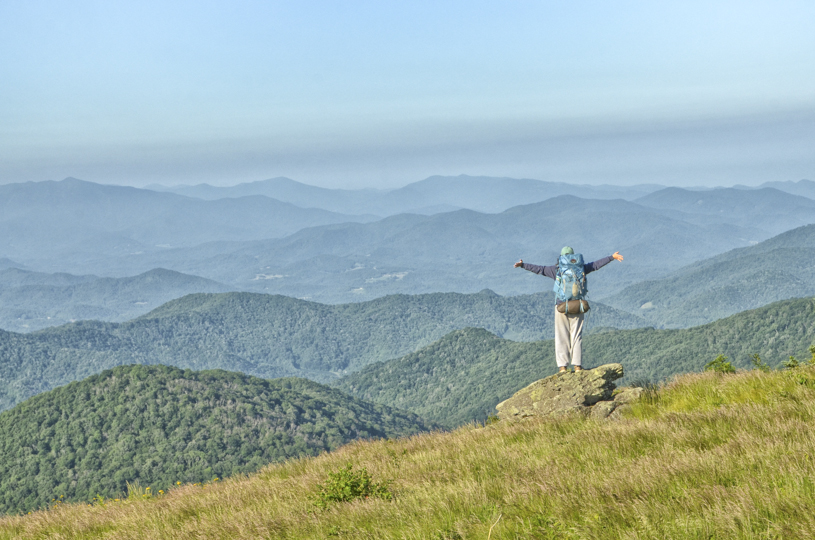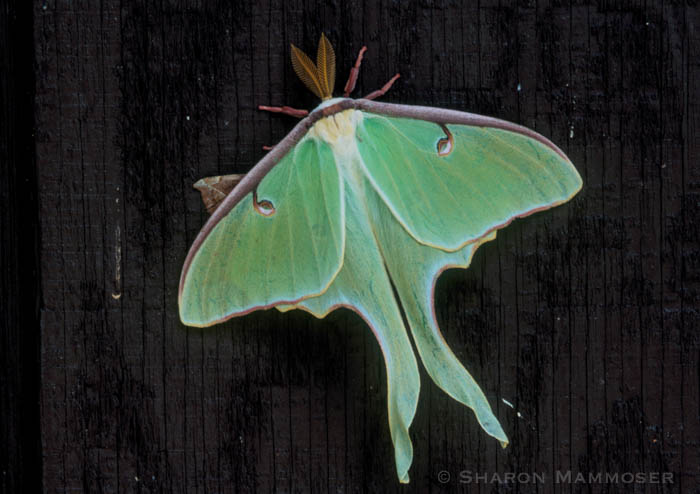Most people never get to see the very beautiful moth from last week’s puzzler –the luna moth, ( Actias luna.) This green moth has an impressive wingspan of 3-4.5 inches though wikipedia says it can reach a wingspan of 7 inches. Not sure how common this is but wouldn’t that be an impressive sight! This moth has no mouthparts as an adult so does no feeding. It only lives about a week and its main goal in this time is to find a mate. Females will emit a strong smell, called a pheromone to attract males, who are able to smell them with their feathery antennae. Males can smell females from many miles away!
After mating, females will then lay groups of 4-7 eggs on the undersides of leaves, up to 400-600 in total. Unlike many other caterpillars that need very specific plants (Think monarch and milkweed or pipevine swallowtail on dutchman’s pipevine), the luna caterpillar feeds on many different trees including alder, cherry, beech, birch, willow, walnut, hickory, poplar, oak, elm and sweet gum.
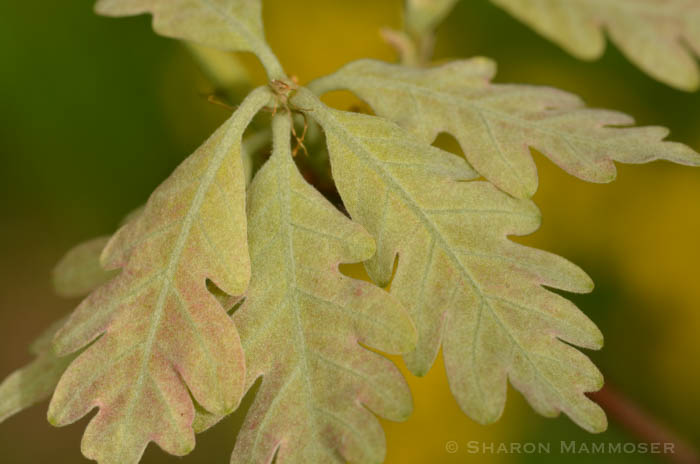
In Canada and the northern states of the eastern United States, the luna moth will have one generation per year, while in the south, they can have up to three generations. They spend the rest of the year, and winter in their cocoon in the leaf litter–yet another reason why it is so important to leave some wild places in your yard, including undisturbed leaf litter.
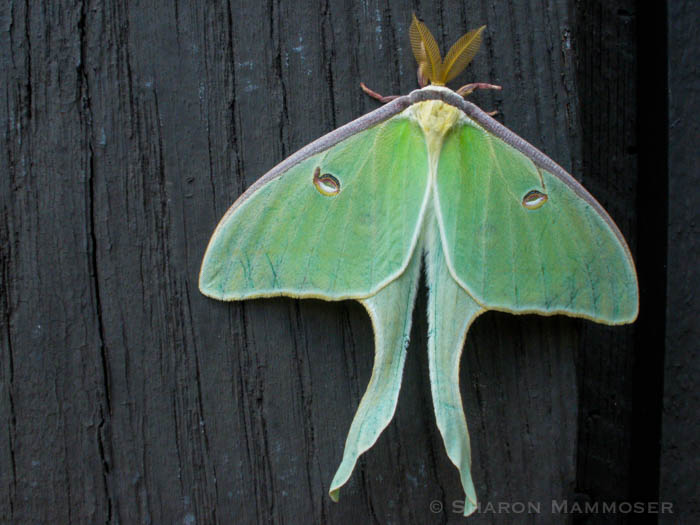
If you are lucky enough to find an adult moth, you can tell whether it’s male or female by looking at the antennae. Males have very large, wide, and feathery antennae while the antennae of females is more sparse, and thinner looking. Females also have a fatter body–this so they can have 600 eggs inside! Another difference, though not always reliable, is that males seem to rest with their wings close, showing only the upper wing, while females rest with both sets of wings showing. When the wings are open though, they look pretty similar.
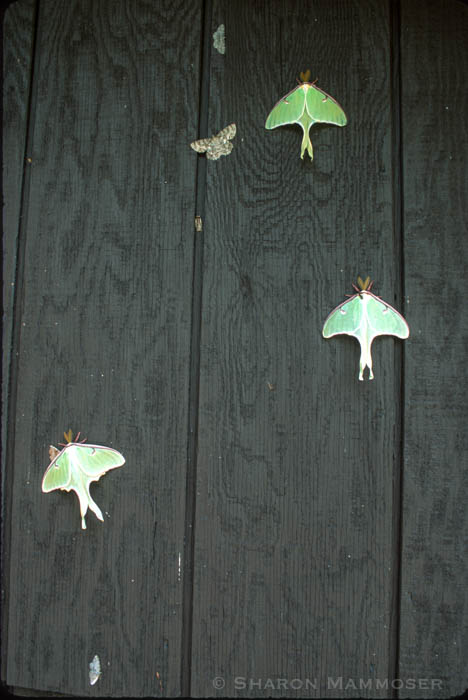
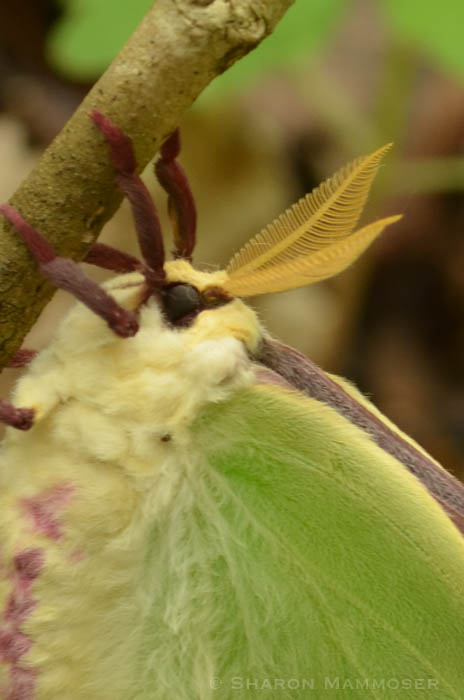
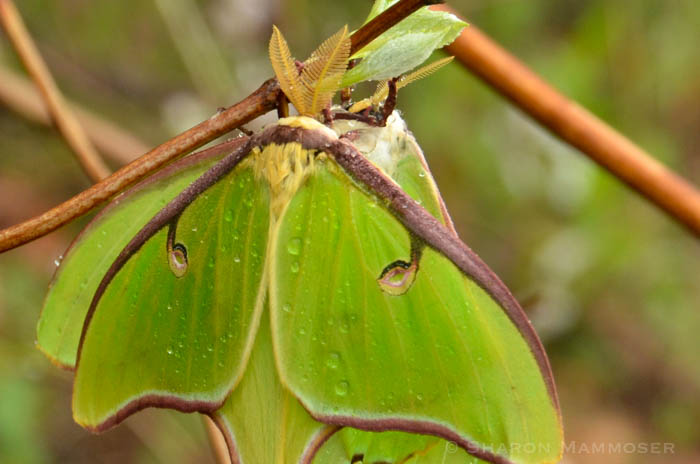
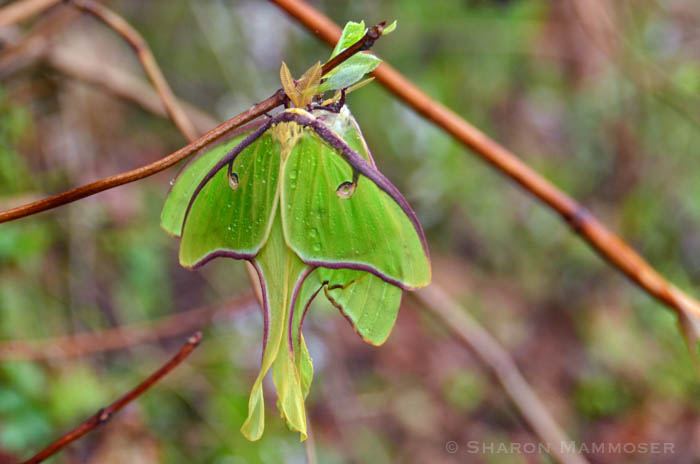

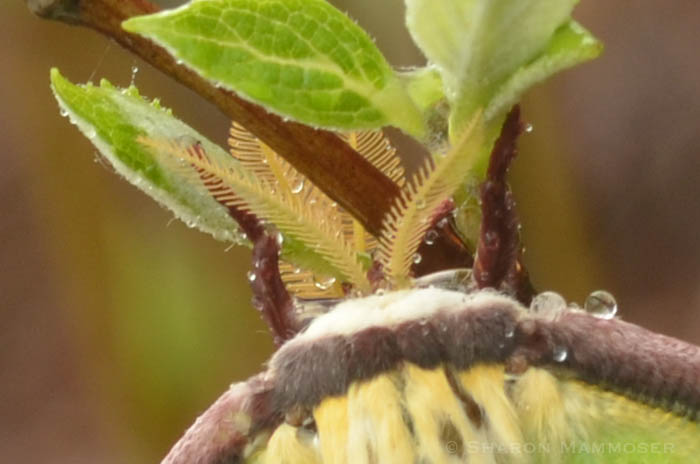
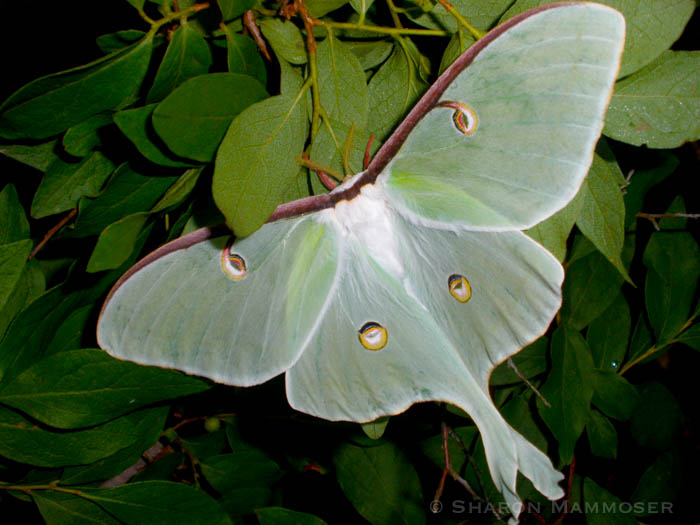

I hope you get to see this moth as it is quite spectacular!
Ready for our next puzzler? Let’s stick with the insect theme… see if you recognize this next puzzler– it’s a photo of a leaf with an ant and some other yellow shapes. Can you tell us what’s going on?

